Si eres amante de los cáctus , tienes que ver todos estos tipos que fotografié / If you're a cactus lover, you should see all these types of cactus I photographed
Clasificación de cactus silvestres / Classification of wild cactus*
Que tal queridos Hivers, espero que se encuentren muy bien.
Tenia un par de semanas planeando este post, pensaba si debía subirlo o no, pensé que quizás no seria de importancia pero bueno un tiempo después me decidí y aquí esta. En mi ultimo viaje de visita a mi familia pude fotografiar diferentes tipos de cáctus que me encontré en el camino, sinceramente no le di mucha importancia ya que esta planta es muy común allí, y crece en todos los lugares literalmente, incluso arriba de los tejados de las casas, pero en otros países son consideradas plantas exóticas, quizás por que son originarias de América.
How are you, dear Hivers? I hope you're feeling very well.
I had a couple of weeks planning this post, I was wondering if I should upload it or not, I thought maybe it wouldn't matter but then I decided and here it is. In my last trip to visit my family I was able to photograph different types of cactus that I found on the way, honestly I didn't give it much importance since this plant is very common there, and grows in all places literally, even above the roofs of the houses, but in other countries they are considered exotic plants, maybe because they are native to America.
En Europa mayormente se venden gran cantidad de cáctus , y se que es muy difícil el traslado, incluso un primo que vive en Alemania me dijo que el había comprando algunos cáctus, y que estaban de moda, todos sus amigos querían o tenían una de estas plantas, investigue un poco mas acerca de ellas y bueno, resulta que también hay familias de esta planta originarias de Madagascar y África.
In Europe they sell a lot of cactus, and I know that it is very difficult to move, even a cousin who lives in Germany told me that he had bought some cactus, and that they were fashionable, all his friends wanted or had one of these plants, I researched a little more about them and well, it turns out that there are also families of this plant from Madagascar and Africa.

Sinceramente fotografié muchos tipos de cáctus, pero no tenia idea de como era su nombre científico, aquí para los pobladores locales todos tienen el mismo nombre de manera coloquial, así que le pedí ayuda a @ewkaw ya que en una ocasión el me comento que era fan de los cactus. Debo reconocer que no fue para nada fácil clasificar todas estas plantas con sus nombres científicos pero lo intente con algunas, puede que sean de la misma familia, pero pueden tener variaciones según si crecen directamente con luz del sol o si crecen en la sombra, si están cercanos al agua o en una zona árida, como los todos los humanos las plantas también se adaptan.
I honestly photographed many types of cactus, but I had no idea what their scientific name was, here for the locals they all have the same name in a colloquial way, so I asked for help from @ewkaw since he once told me that he was a fan of cactus. I must admit that it was not easy at all to classify all these plants with their scientific names but I tried with some of them, they may be from the same family, but they may have variations depending if they grow directly with sunlight or if they grow in the shade, if they are close to water or in an arid zone, as all humans plants also adapt.
Entonces comencemos.
Then let's get started.
1- El Cardón, como le conocen en la zona a la cual frecuento su nombre científico es Stenocereus griseus, Cactaceae. Como lo apode el gran gigante, ya que puede alcanzar entre 3-6mts de altura, es originario de Venezuela, México y Colombia. Cuando hay época de lluvias puede florear y dar un fruto redondo, de colores rojo, blanco, amarillo, naranja y muchas otras tonalidades. Este tipo de cactus, puede soportar un verano extremo ya que sus hojas en este caso "espinas" están diseñadas para liberar la menor cantidad de agua posible, incluso su centro esta repleto de agua, no muere con facilidad, pues al morir puede retoñar nuevamente, y en su interior tiene una especie de madera liviana utilizada para construir cercas.
The Cardón, as it is known in the area where I frequent, has the scientific name Stenocereus griseus, Cactaceae. As it is nicknamed by the great giant, since it can reach between 3-6mts high, it is native to Venezuela, Mexico and Colombia. When there is a rainy season it can flower and give a round fruit, of red, white, yellow, orange and many other tonalities. This type of cactus, can withstand an extreme summer because its leaves in this case "thorns" are designed to release the least amount of water possible, even its center is full of water, does not die easily, because when it dies it can sprout again, and inside it has a kind of light wood used to build fences.
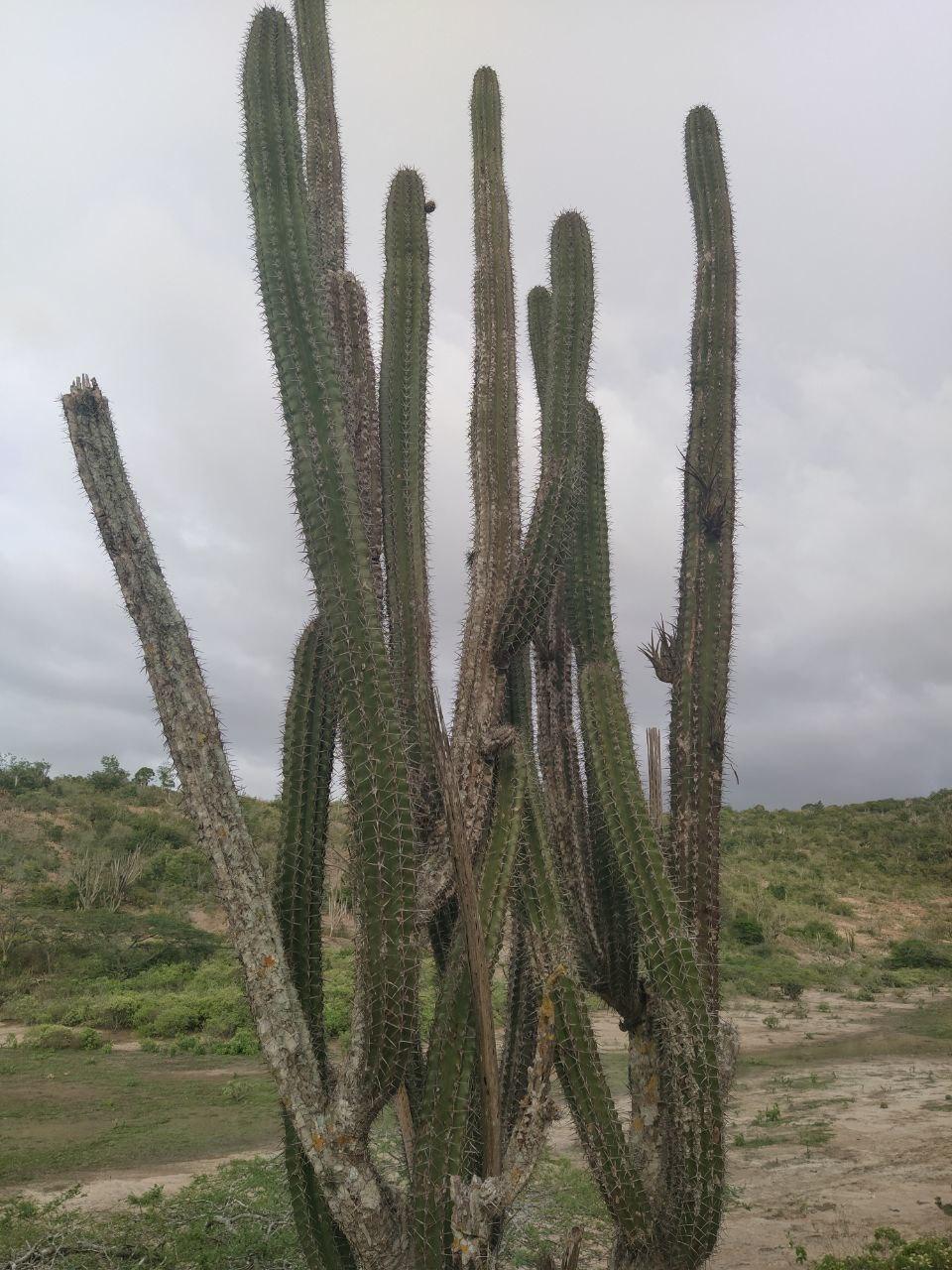
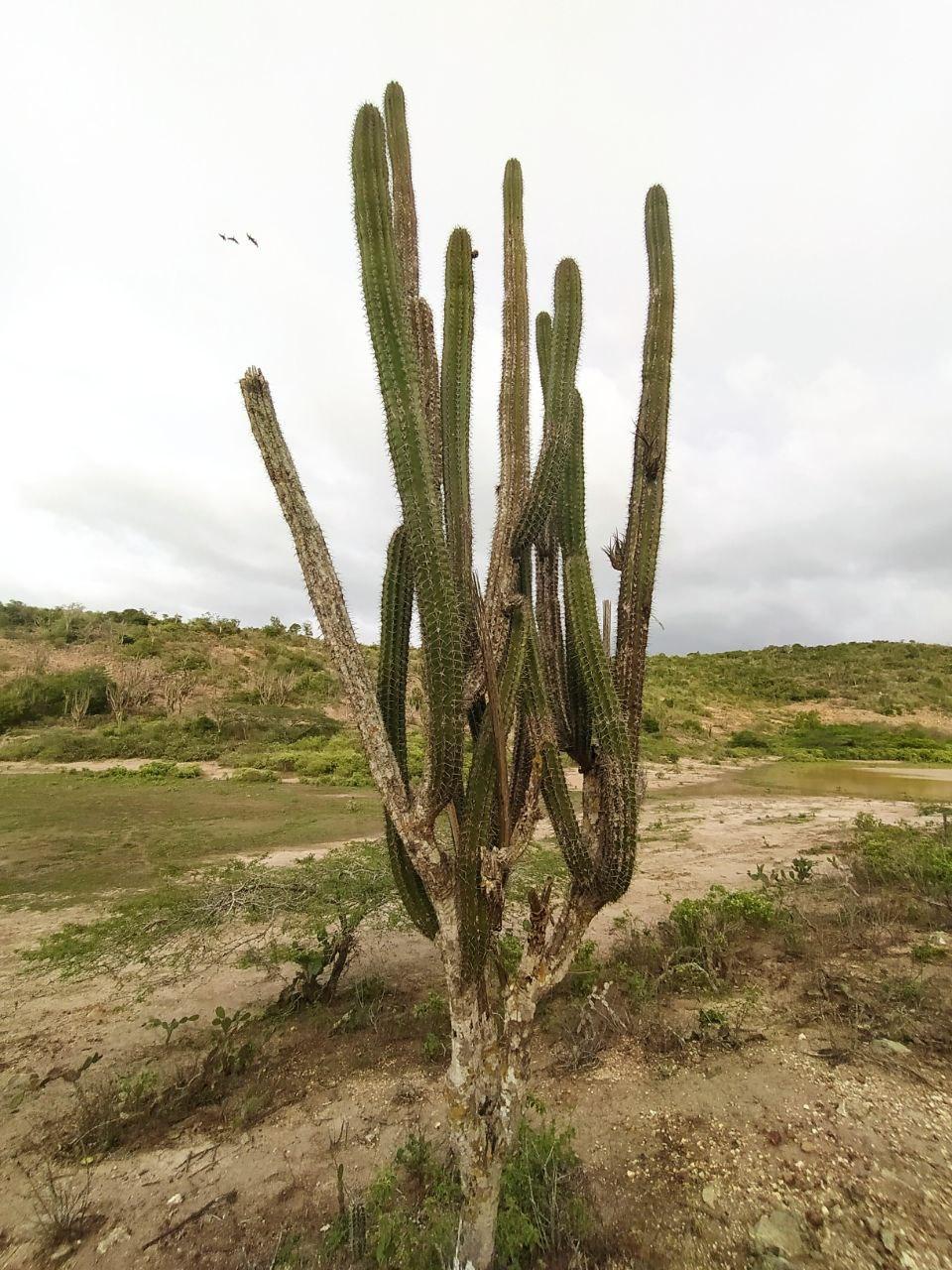
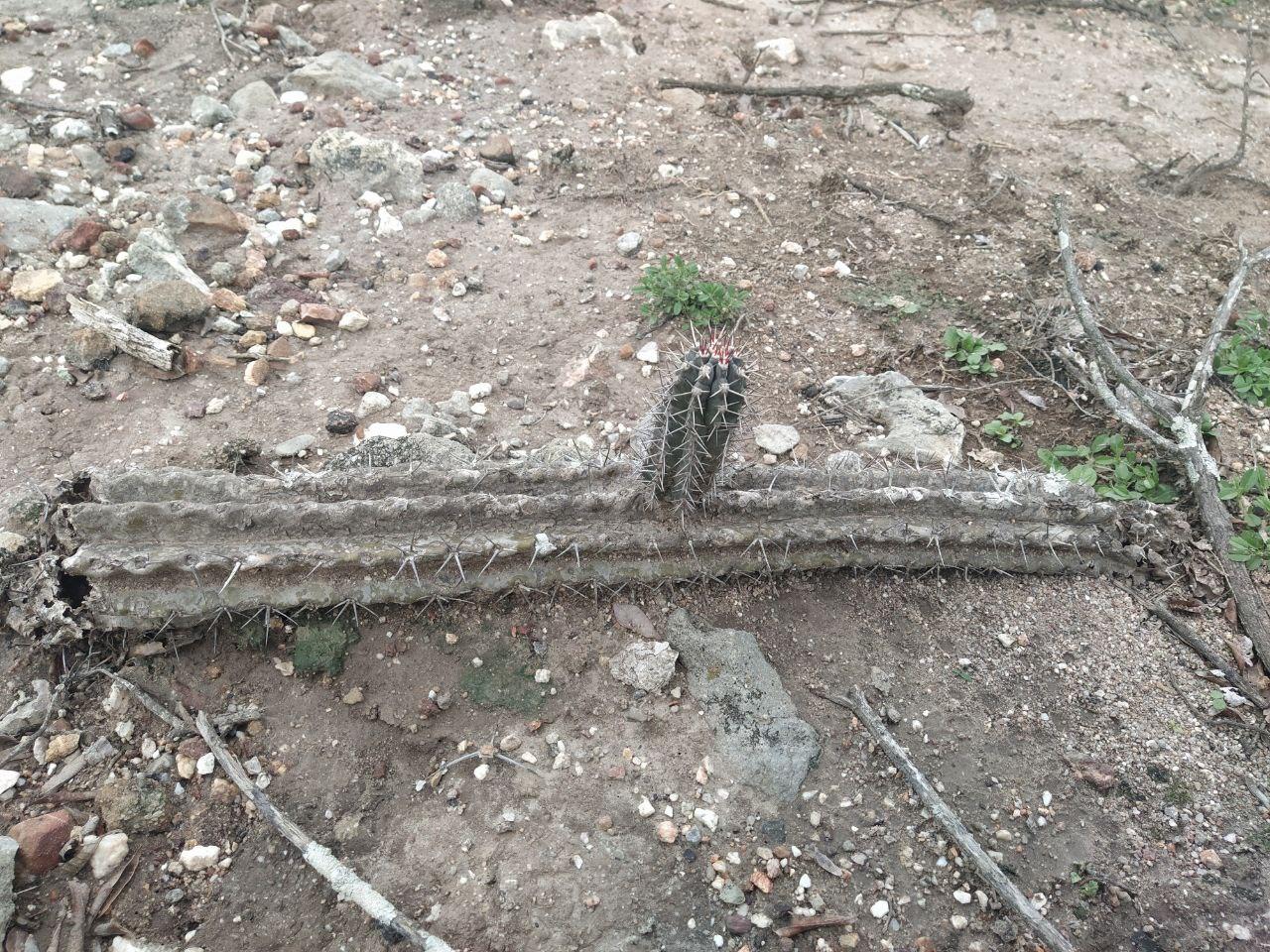


En un anterior post hable de los frutos de este cactus, puedes verlo Aquí / In a previous post I talked about the fruits of this cactus, you can see it Here
2- Cardón de lefarias, al igual que el anterior cactus este es de la misma familia pero su nombre científico es Subpilocereus repandus,Cactaceae. Sinceramente no estoy seguro si lo clasifique de manera correcta, pero mi familia los diferencia en una cosa, el cardón macho tiene espinas mas pequeñas y es el que da el fruto "dato", el cardón hembra o de lefarias tiene espinas mas grandes y da la fruta lefaria. Esta fruta es ovala color verde y su pulpa es de color blanco, al igual que su anterior primo, ambos pueden medir entre 3-6mts de altura, y también tiene madera liviana en su interior, soporta extremo verano y retoña fácilmente.
Cardón of lefarias, like the previous cactus this one is of the same family but its scientific name is Subpilocereus repandus,Cactaceae. I'm not sure if I'm classifying it correctly, but my family differentiates them in one thing, the male cardon has smaller spines and is the one that gives the "dato" fruit, the female cardon or lefaria has larger spines and gives the lefaria fruit. This fruit is green oval and its pulp is white, like its previous cousin, both can measure between 3-6mts high, and also has light wood inside, supports extreme summer and sprouts easily.
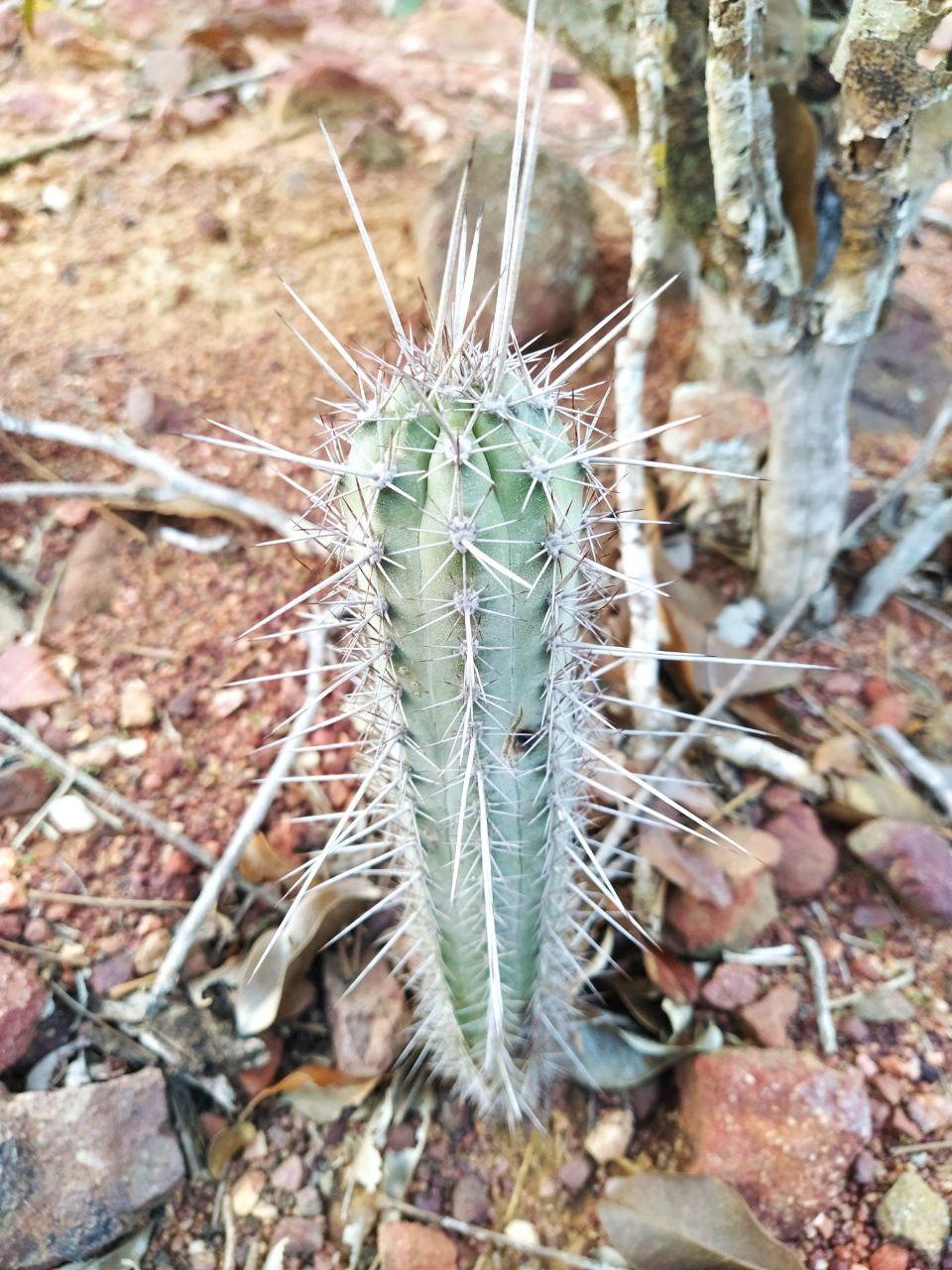

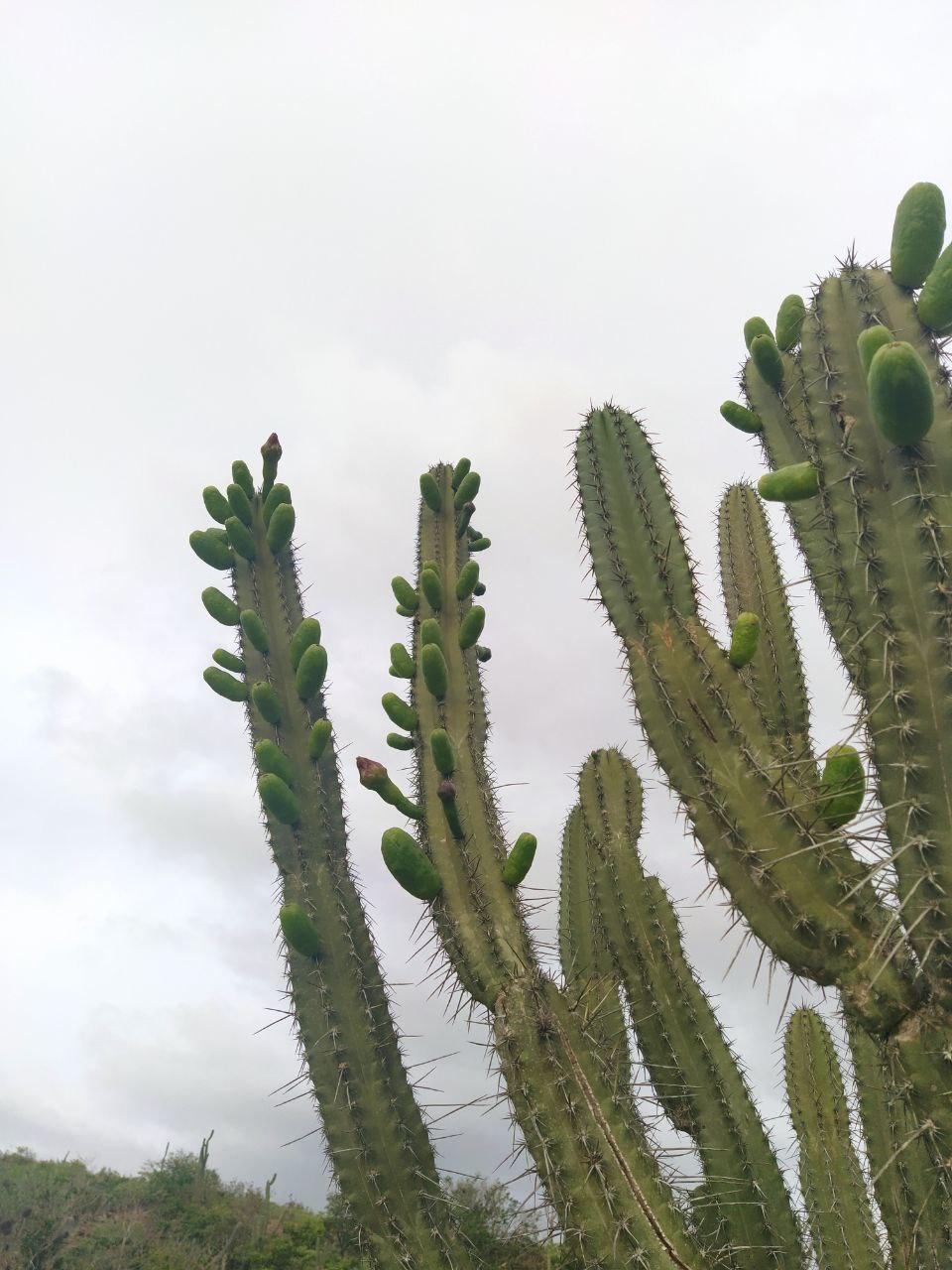
3- Buche, es un cactus muy pequeño que esta al nivel del suelo su nombre científico es el Melocactus curvispinus, Cactaceae. Esta planta puede tener muchas variaciones, aunque son de la misma familia se pueden encontrar algunas con color de espinas distintos, tamaño y colores mas brillantes, todo depende de la zona en la que estén, por ejemplo algunos los encontré en la cima de una montaña y otros muy cercanos al agua. También florean y dan un fruto pequeño color rojo, con la pulpa de color blanco la que conocemos como buche.
De igual manera al morir pueden retoñar, y no estoy seguro como nacen pero se pueden observar plantas muy pequeñas del tamaño de una roca, tienen raíces muy fuertes y no es para nada fácil desenterrarlos, ademas también crecen en muchos sitios, incluso encima de las rocas.
Buche, is a very small cactus that is at ground level. Its scientific name is Melocactus curvispinus, Cactaceae. This plant can have many variations, although they are of the same family can be found some with different color of thorns, size and but brilliant colors, everything depends on the zone in which they are, for example some I found them in the top of a mountain and others very near the water. Also they bloom and give a small red fruit, with the pulp of white color the one that we know as buche.
In the same way when they die they can sprout, and I am not sure how they are born but you can see very small plants the size of a rock, they have very strong roots and it is not at all easy to dig them up, besides they also grow in many places, even on top of rocks.
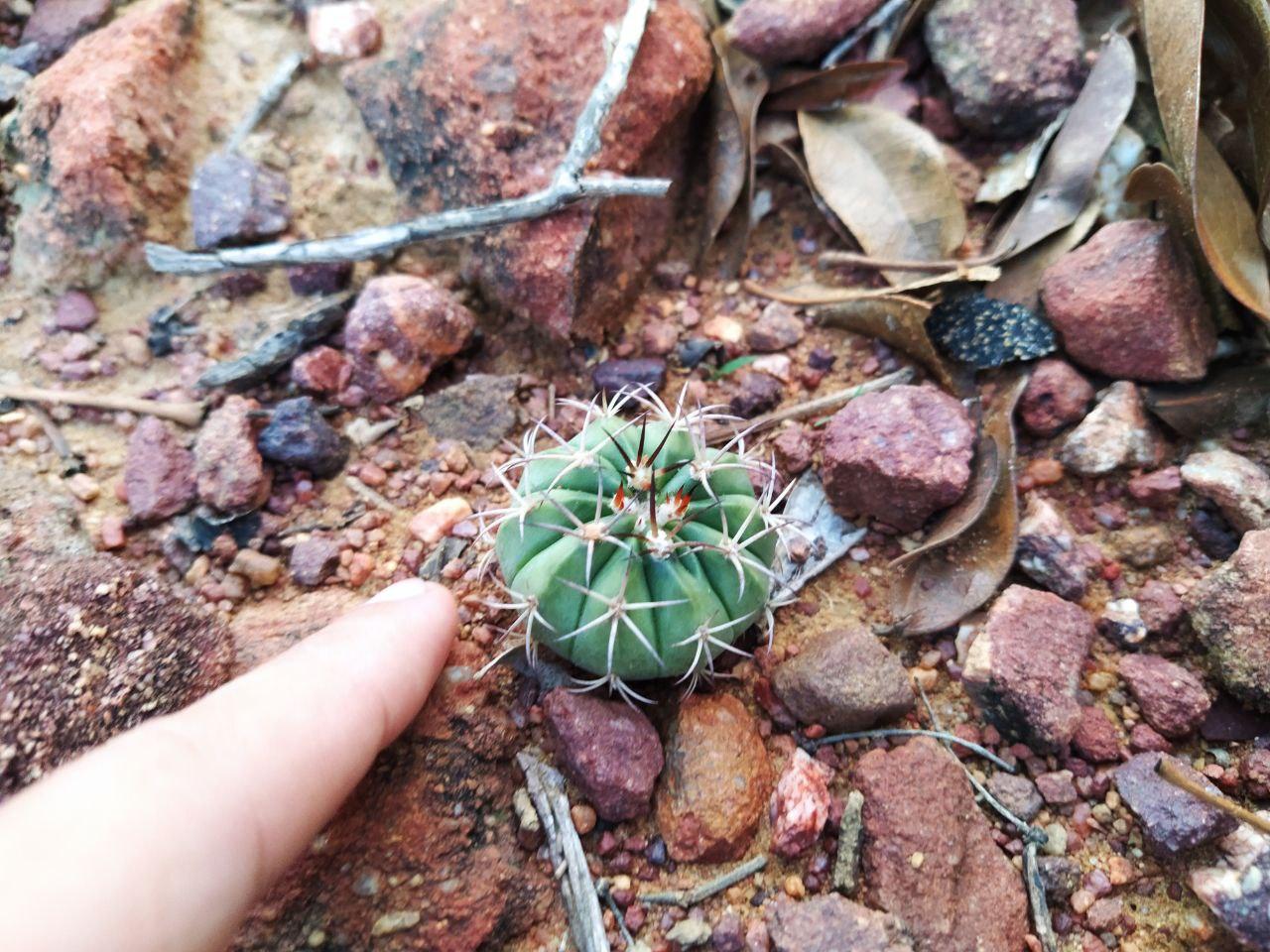
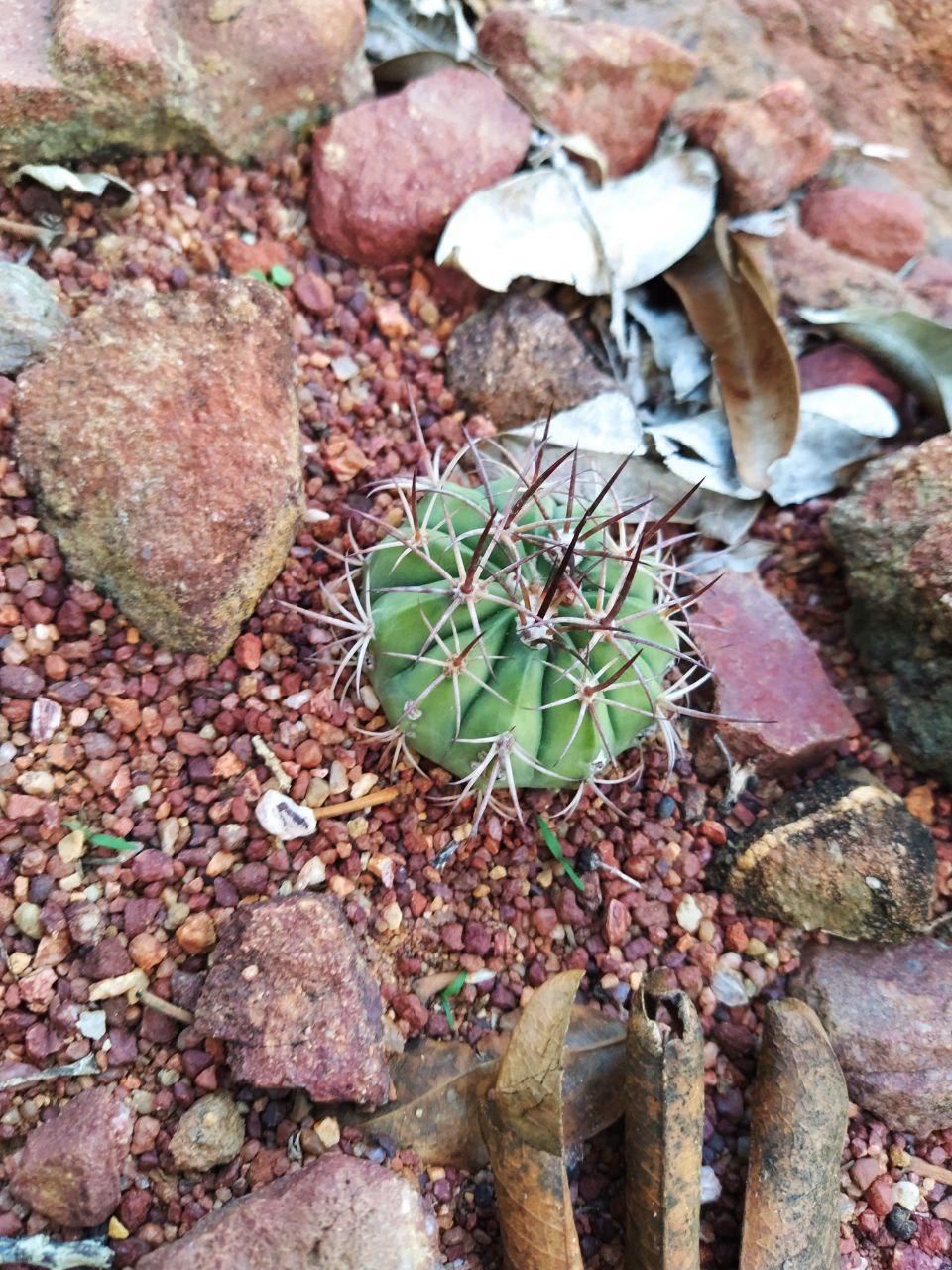
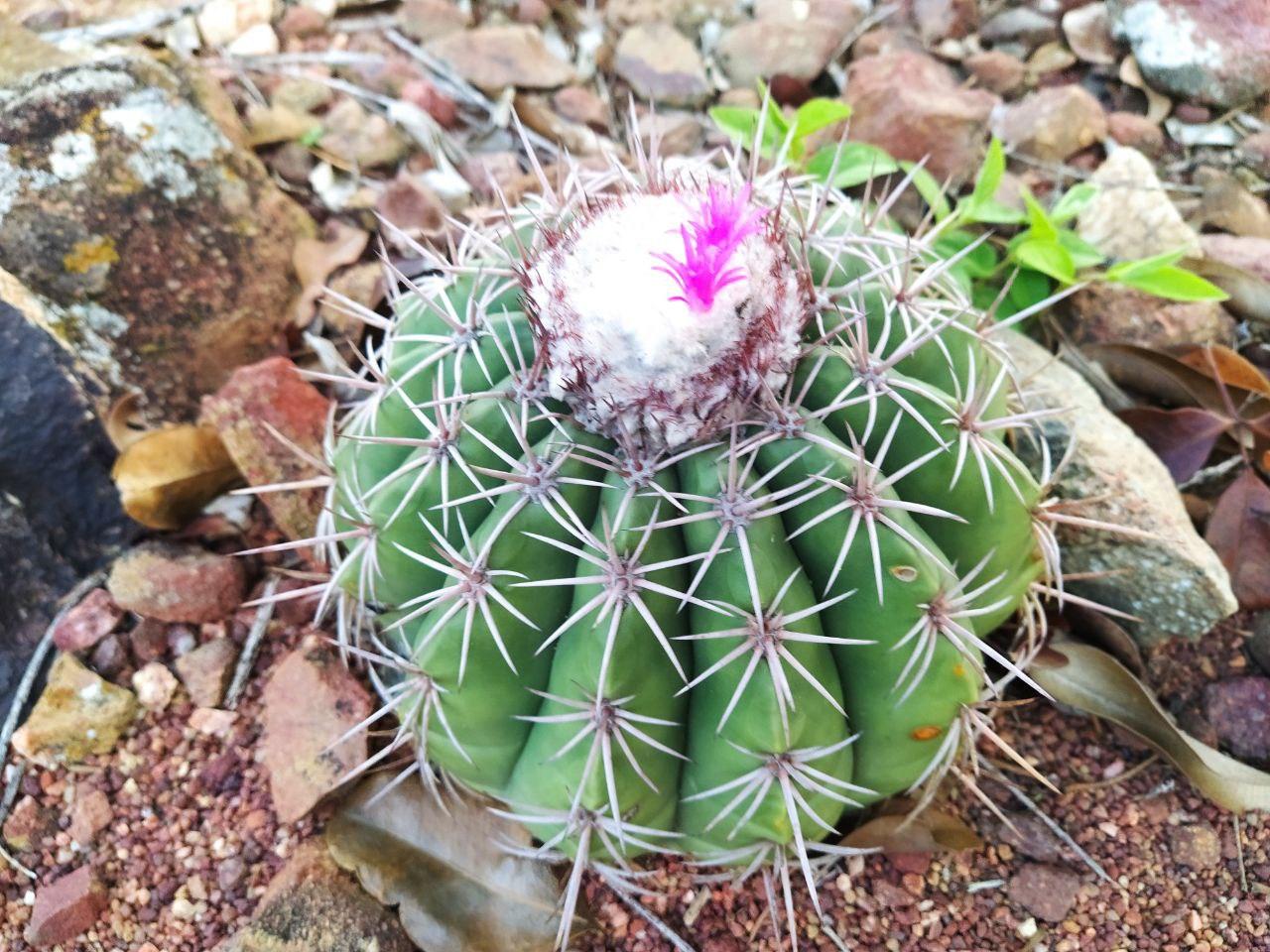
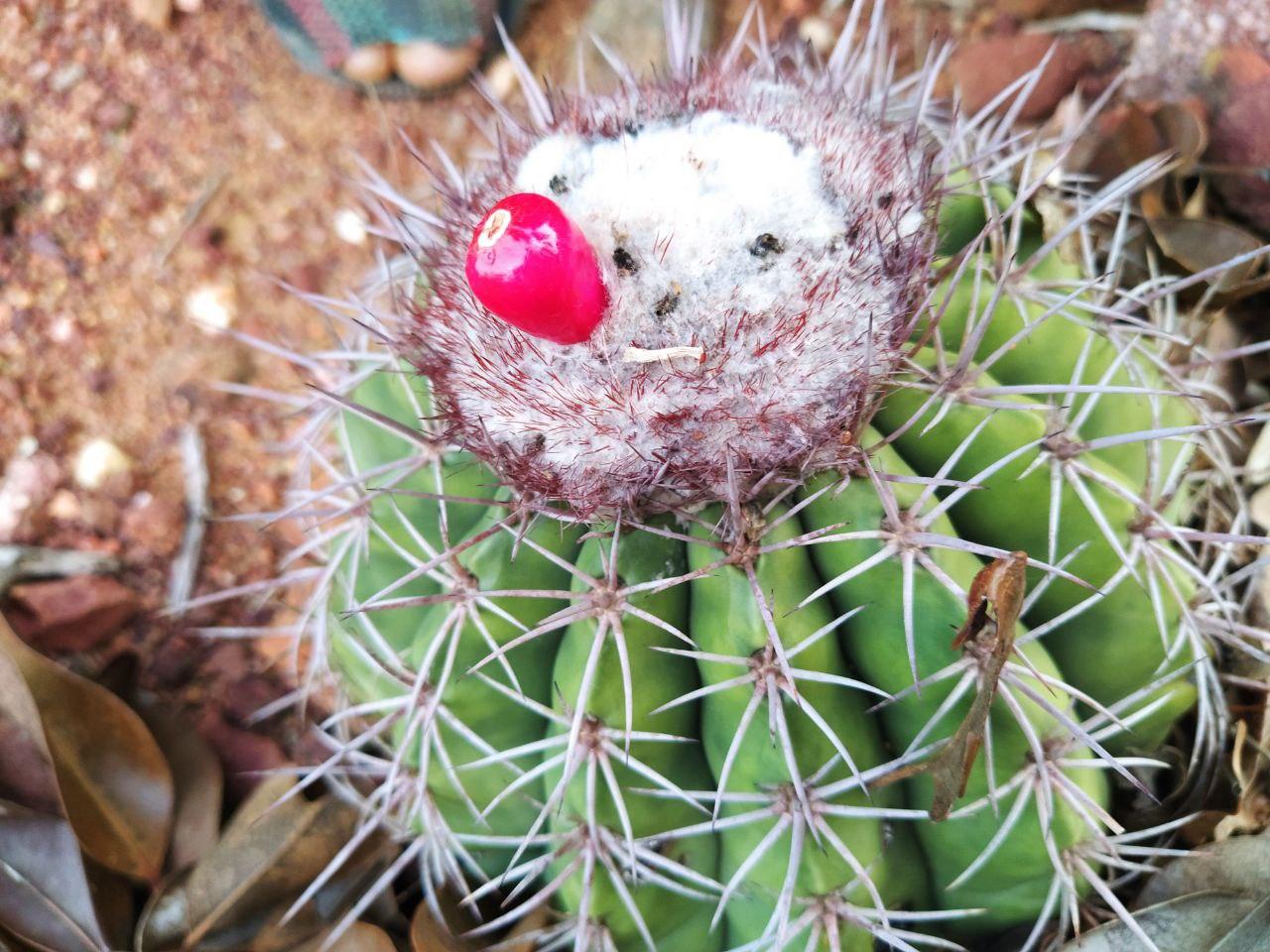
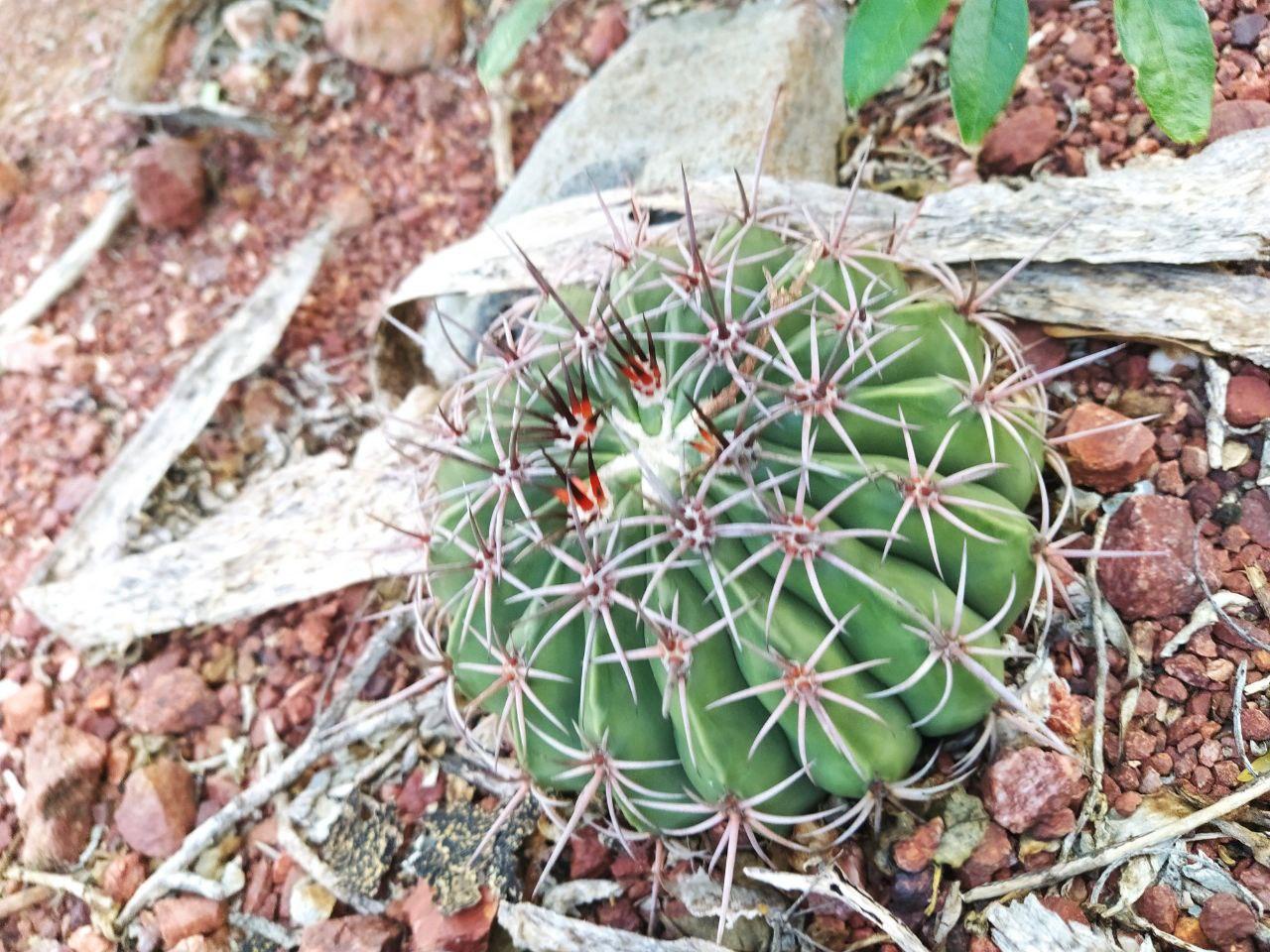

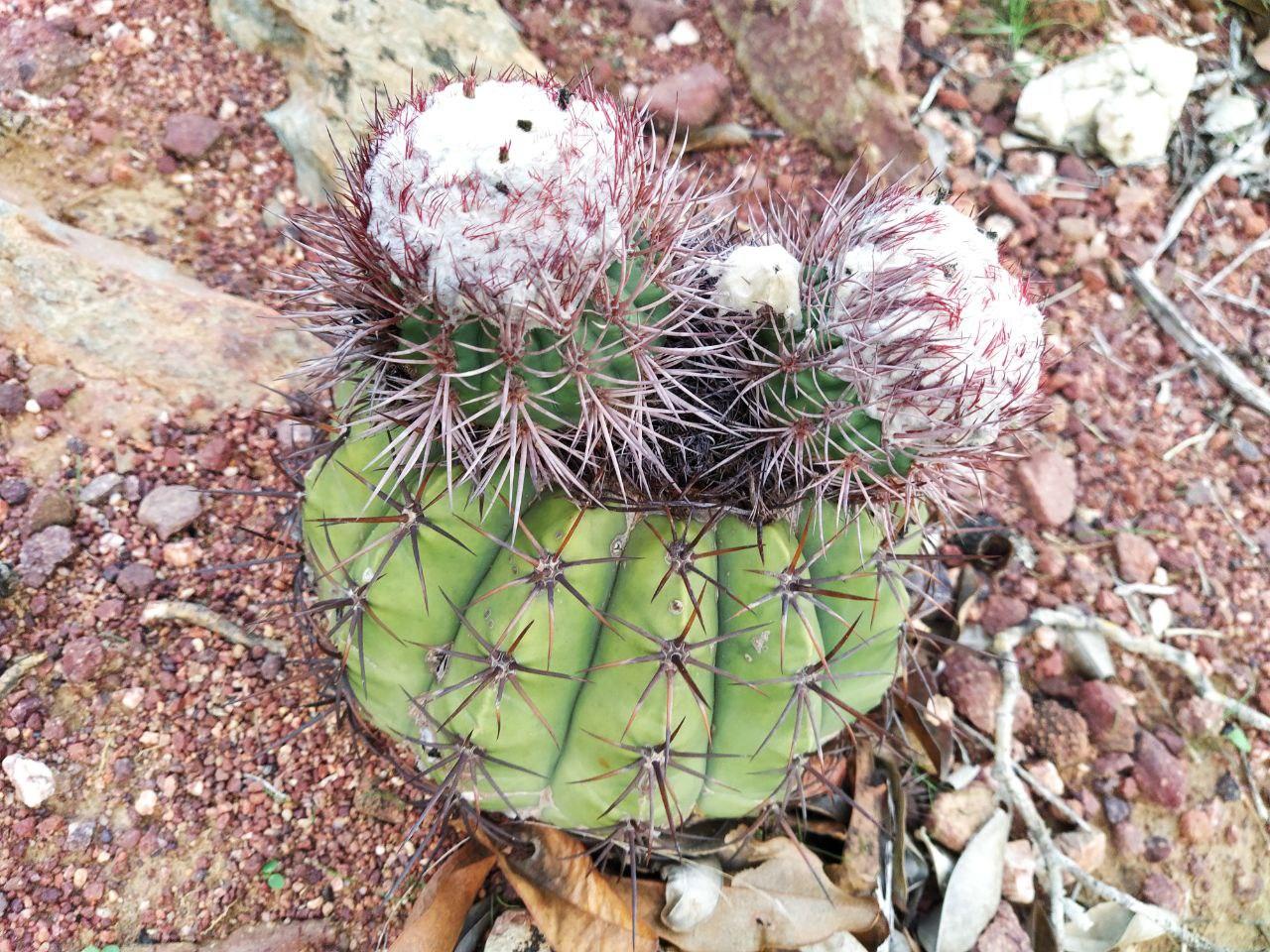
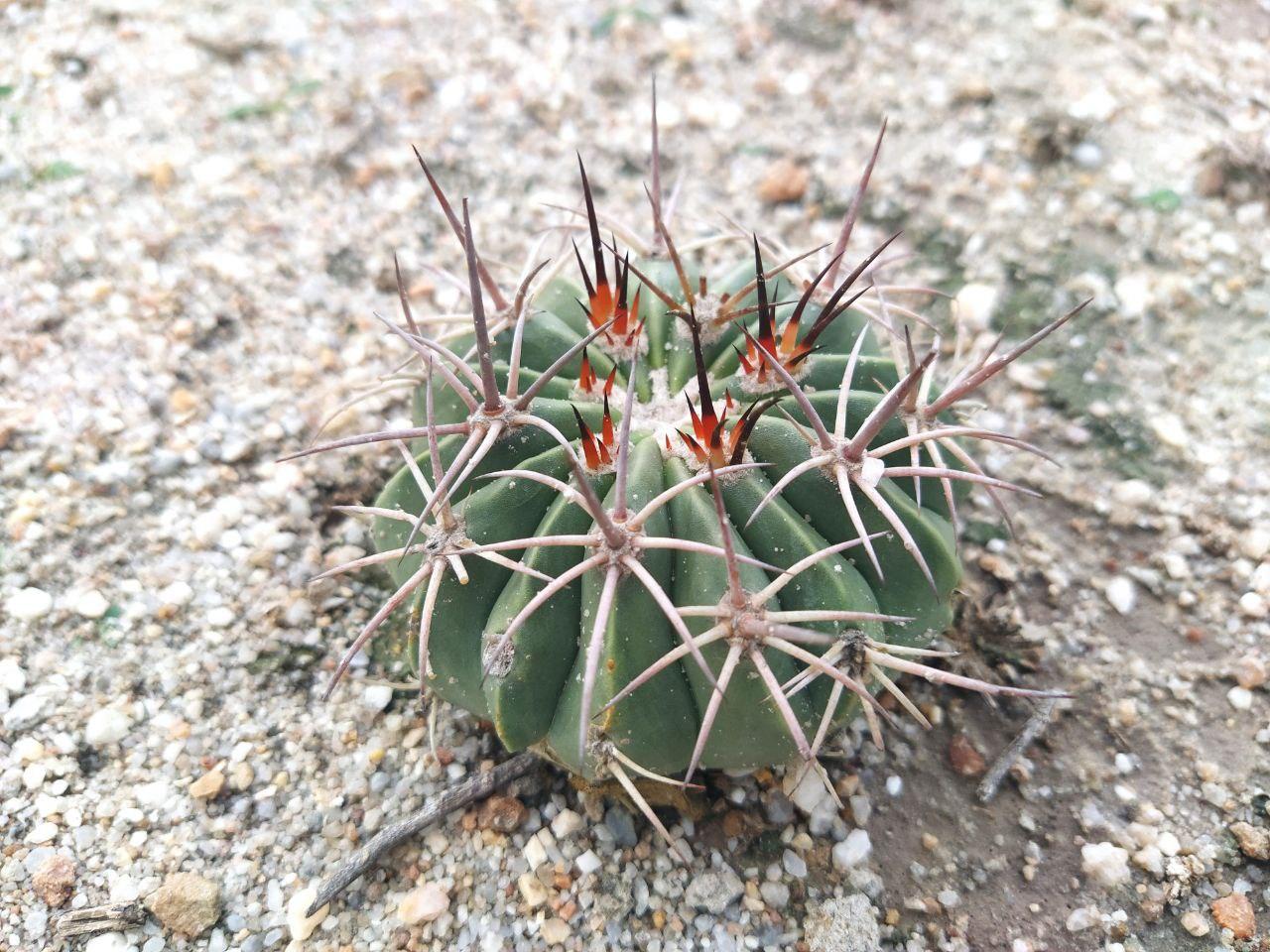
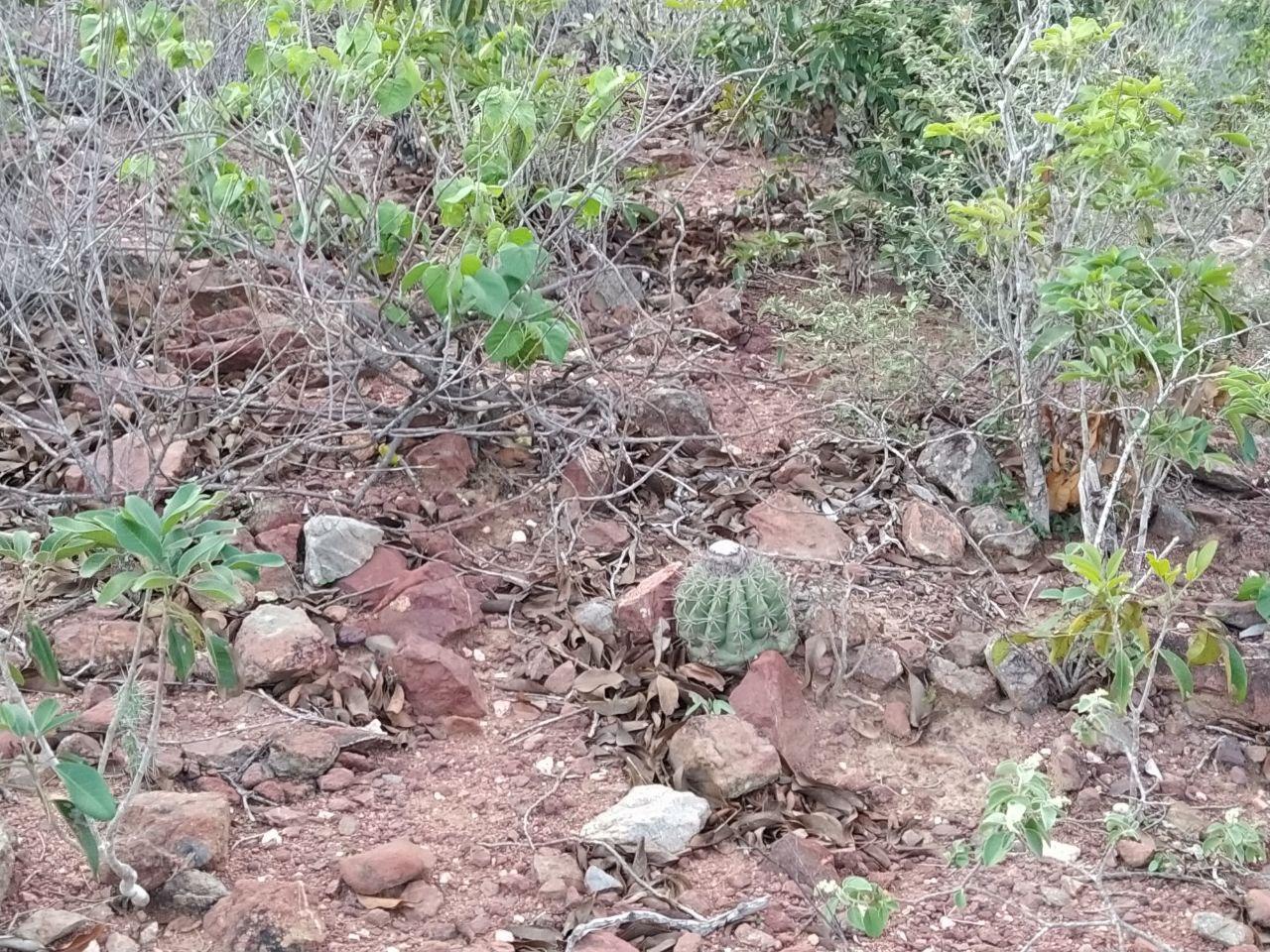

4- Mini buche o mini cactus, así es como se le conoce de manera coloquial, esta pequeña planta puede medir hasta 6cm máximo, que es la altura que yo he podido ver, no encontré su nombre científico específicamente pero puede ser Mammillaria, ya que hay muchas variaciones de esta, y encontré una foto muy parecida de Mammillaria johnstonii Orcutt. Sinceramente este fue el cactus que llamo mas mi atención es muy pequeño y tiene unos colores muy bellos, desconozco si florea y da algún fruto y como nace.
Sinceramente quería traerlo y tenerlo en un vivero, pero quería investigar un poco mas y saber como transportarlo y si el cambio de clima podría matarlo.
Mini cactus, this is how it is known in a colloquial way, this small plant can measure up to 6cm maximum, which is the height that I have been able to see, I did not find its scientific name specifically but it can be Mammillaria, since there are many variations of this one, and I found a very similar picture of Mammillaria johnstonii Orcutt. Sincerely this was the cactus that called my attention but is very small and has some very beautiful colors, I do not know if it flowers and gives some fruit and as it is born.
I sincerely wanted to bring it and to have it in a nursery, but I wanted to investigate a little more and to know how to transport it and if the change of climate could kill it.
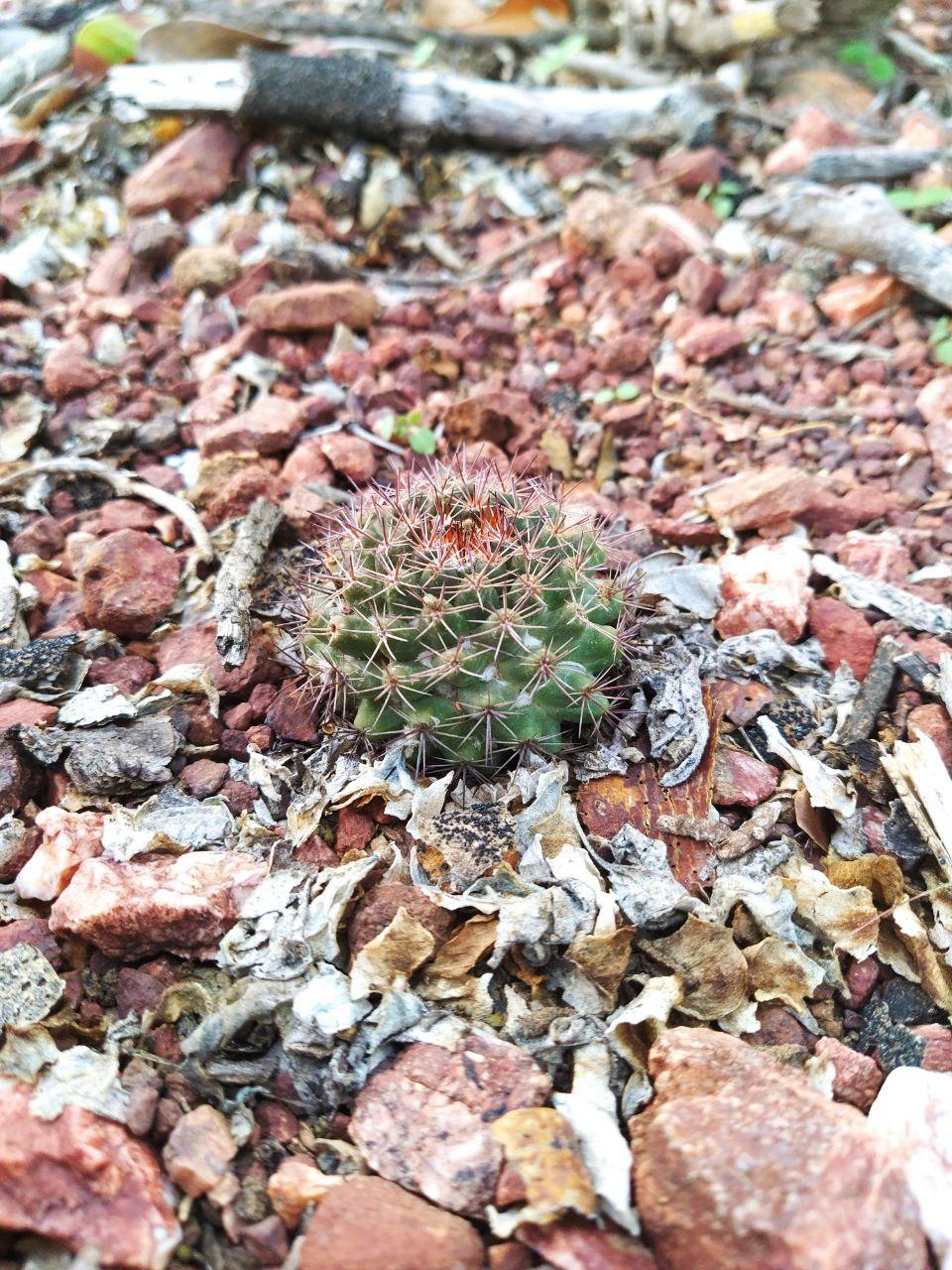
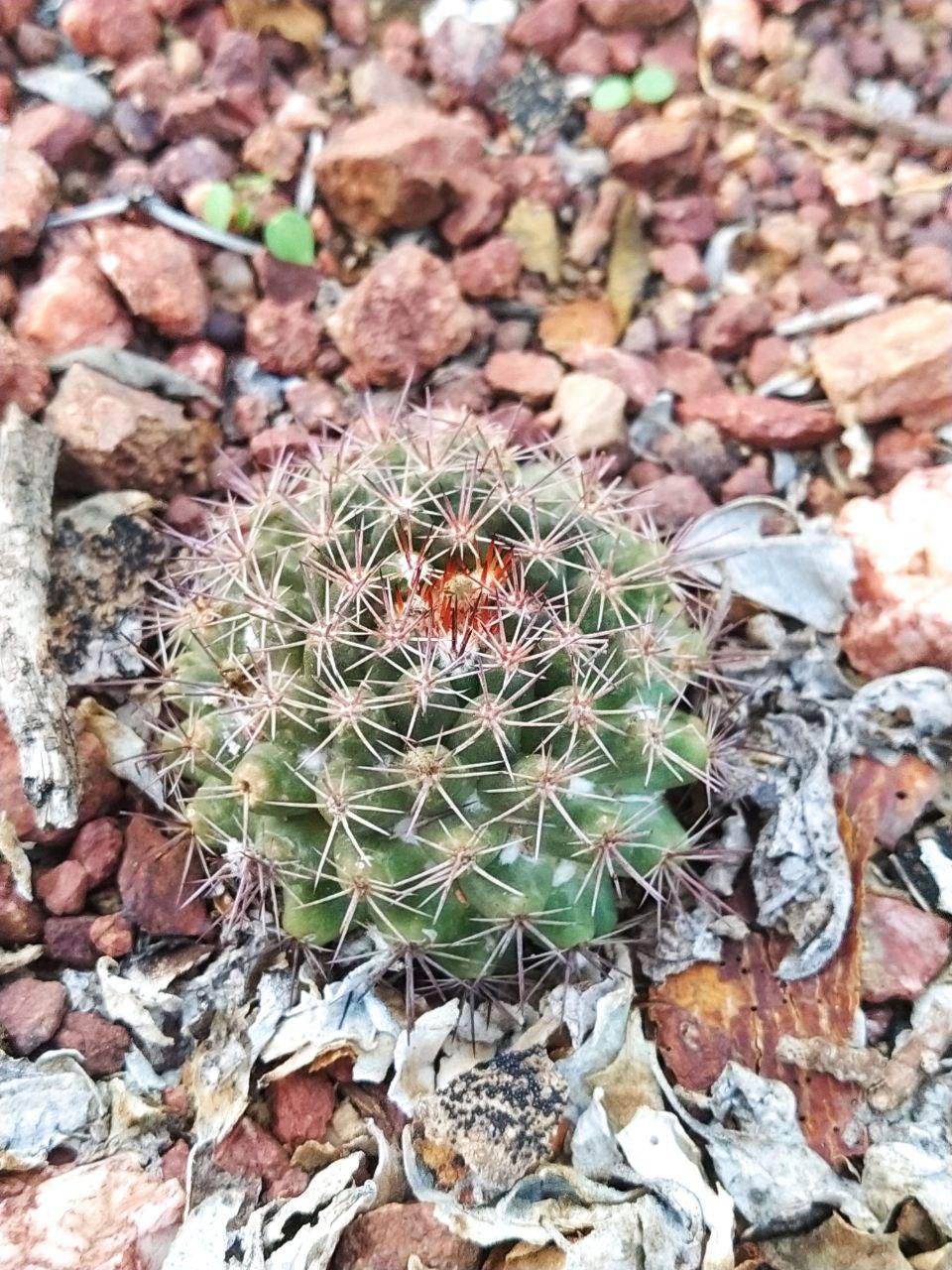
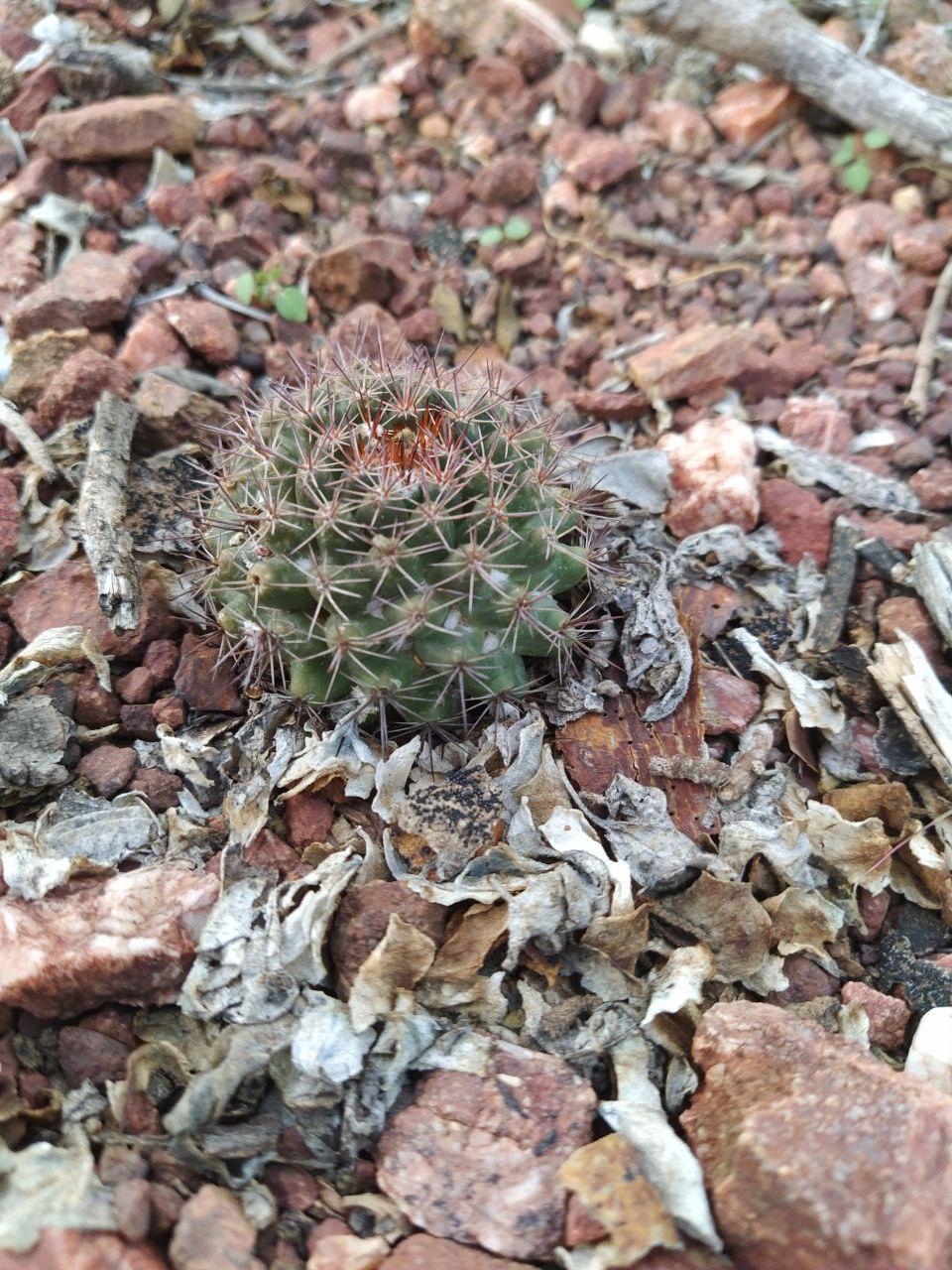
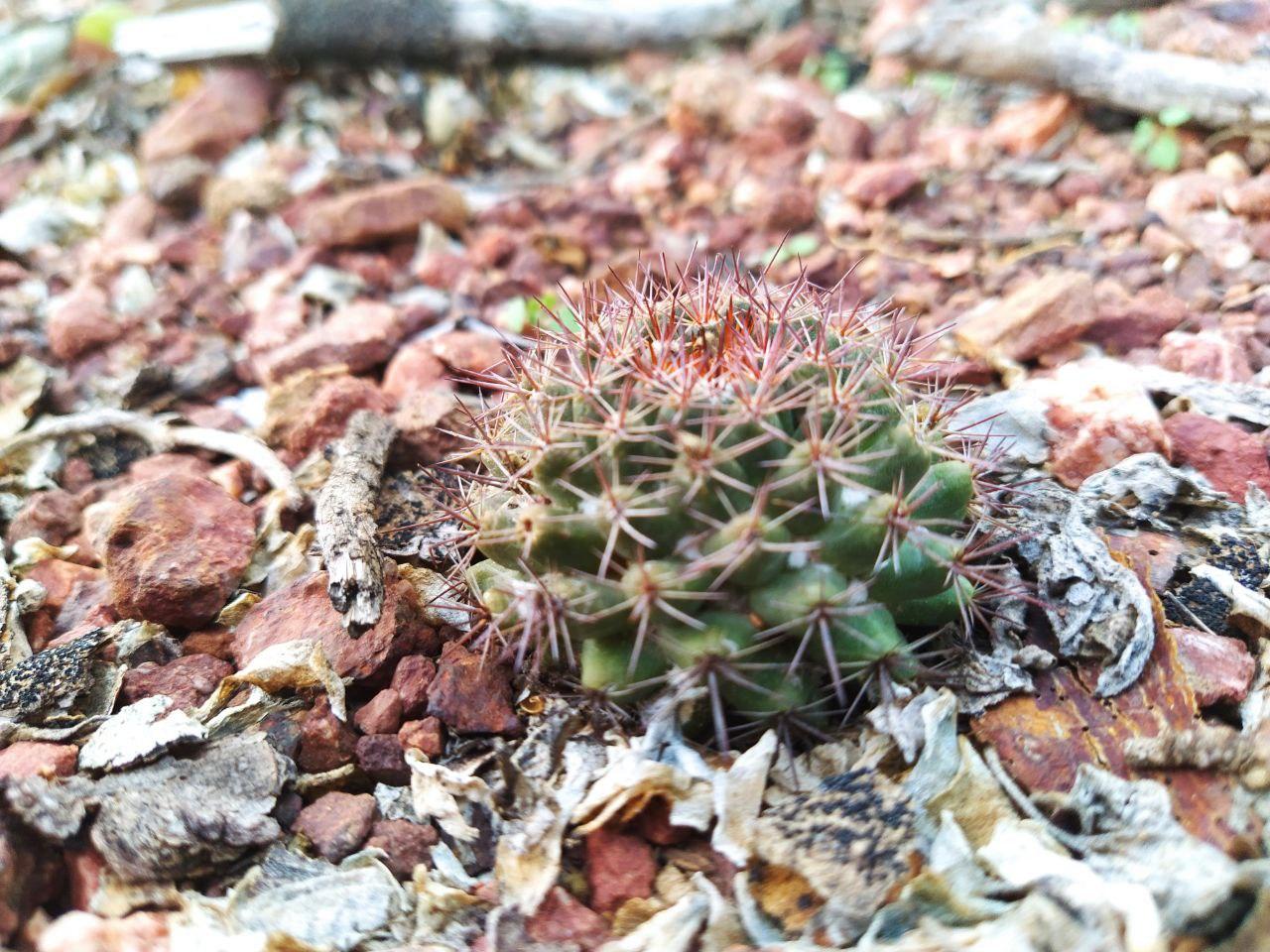
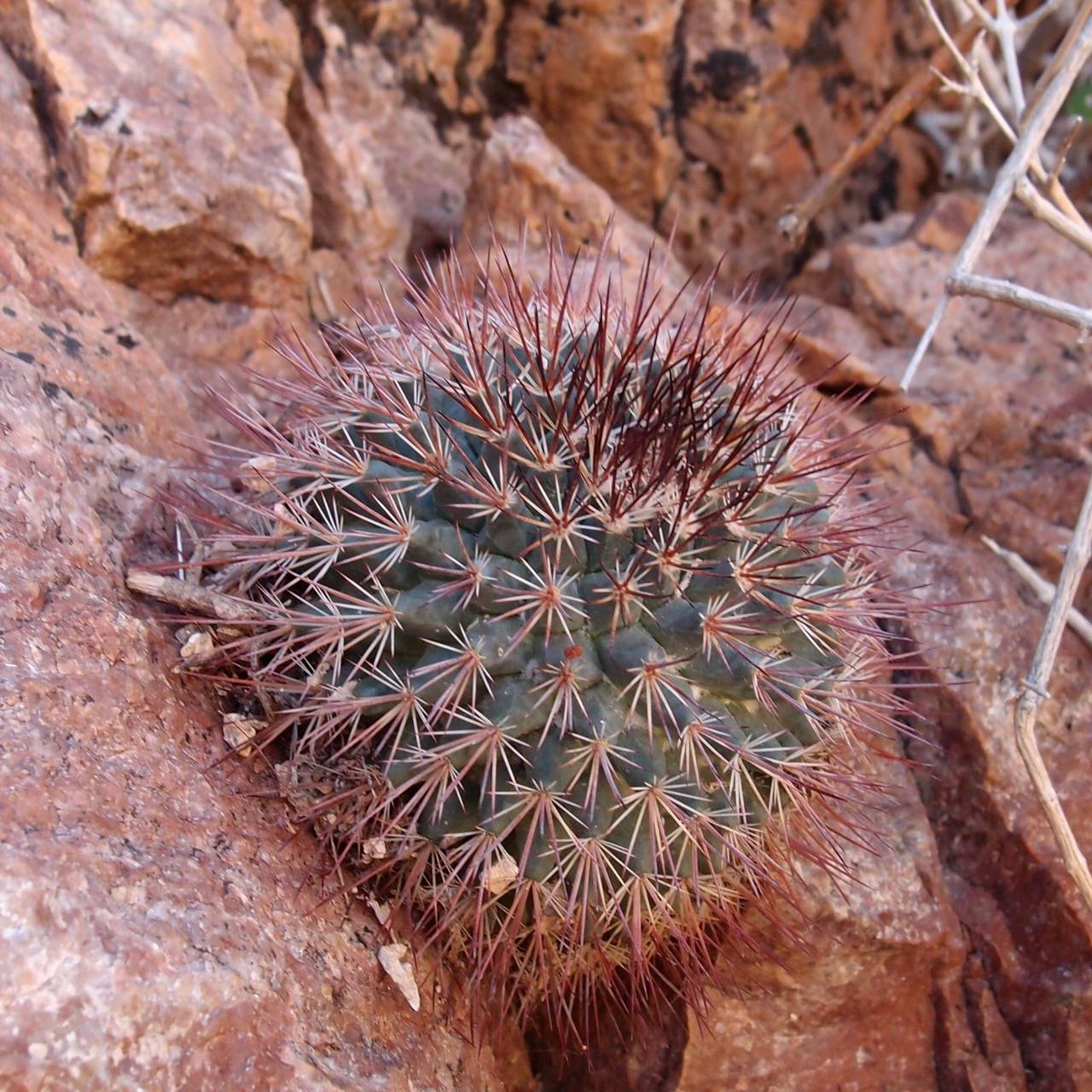
Mammillaria johnstonii Orcutt Fuente/Source
5- Sinceramente de este cactus no encontré mucho, nadie le tiene un nombre en especifico, y no estoy seguro si su nombre científico podría ser Echinocereus, he estado investigando mucho, pero hay muchos tipos de cactus en el mundo con características similares, sin embrago es una imagen muy aterradora, tropezar y caer sobre alguno debe ser doloroso.
Honestly I didn't find much about this cactus, nobody has a specific name for it, and I'm not sure if its scientific name could be Echinocereus, I've been doing a lot of research, but there are many types of cactus in the world with similar characteristics, however it's a very scary image, tripping and falling on one must be painful.
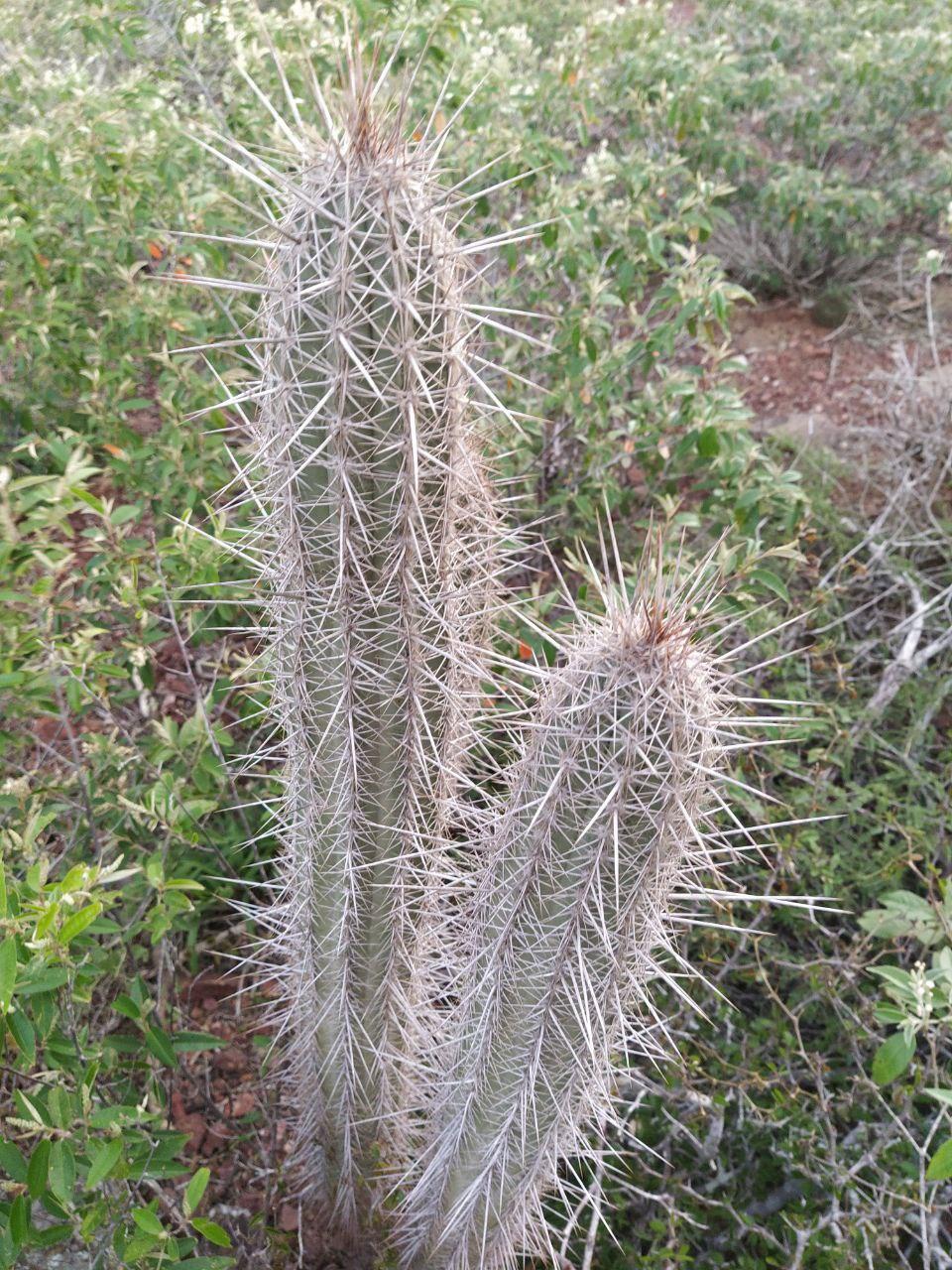
6- Este cactus tiene unas espinas muy peculiares color amarillo, y son muy finas, es muy diferente a los anteriores, y las imágenes mas cercanas a estas características me dieron como nombre científico Pilosocereus lanuginosus, de igual manera desconozco como nace y si puede dar frutos, la verdad es la primera vez que lo veía, y es una variación muy extraña en esta zona.
This cactus has some very peculiar yellow thorns, and they are very fine, it is very different from the previous ones, and the images closer to these characteristics gave me as scientific name Pilosocereus lanuginosus, in the same way I don't know how it is born and if it can give fruits, the truth is the first time I saw it, and it is a very strange variation in this area.
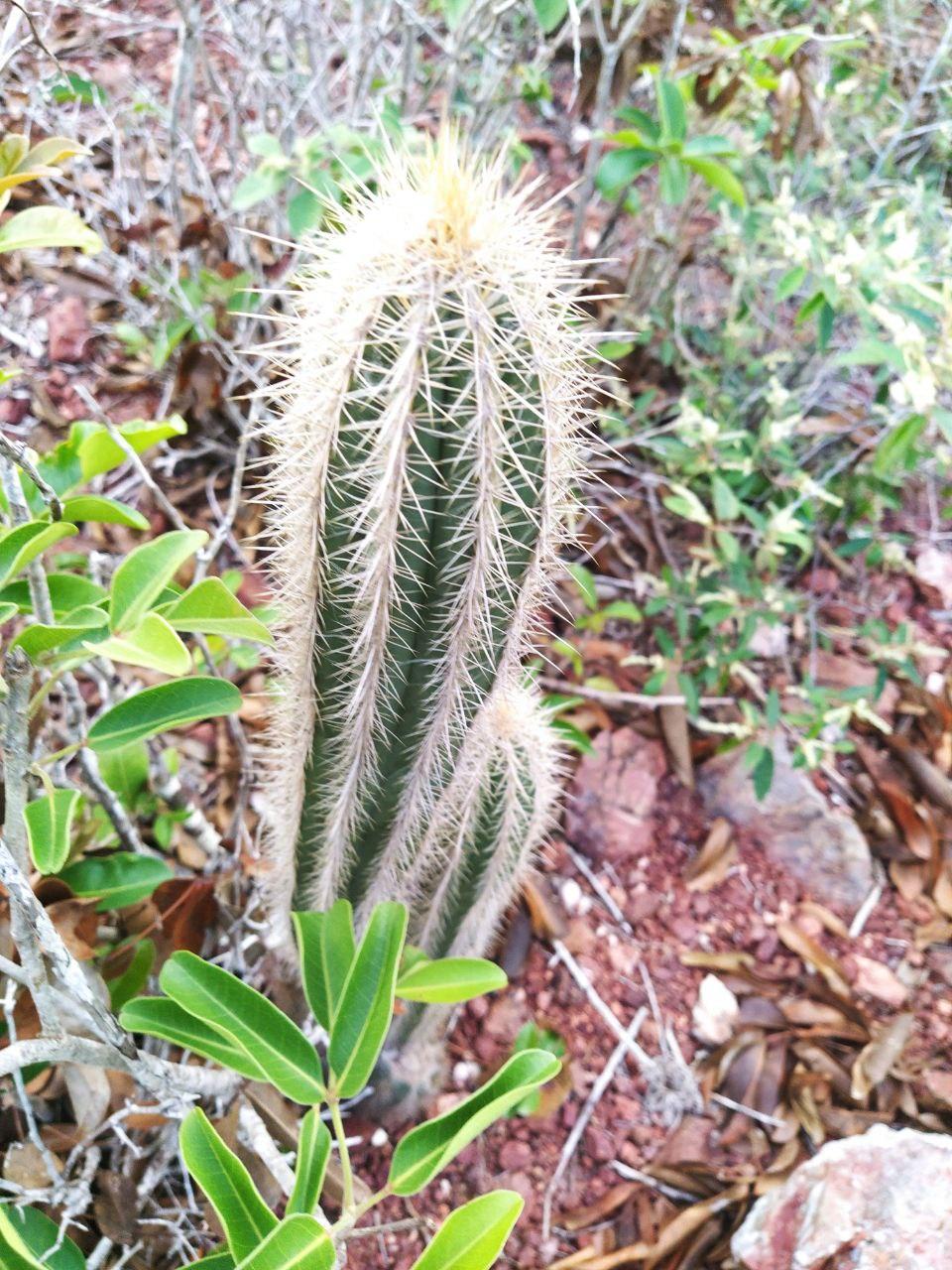
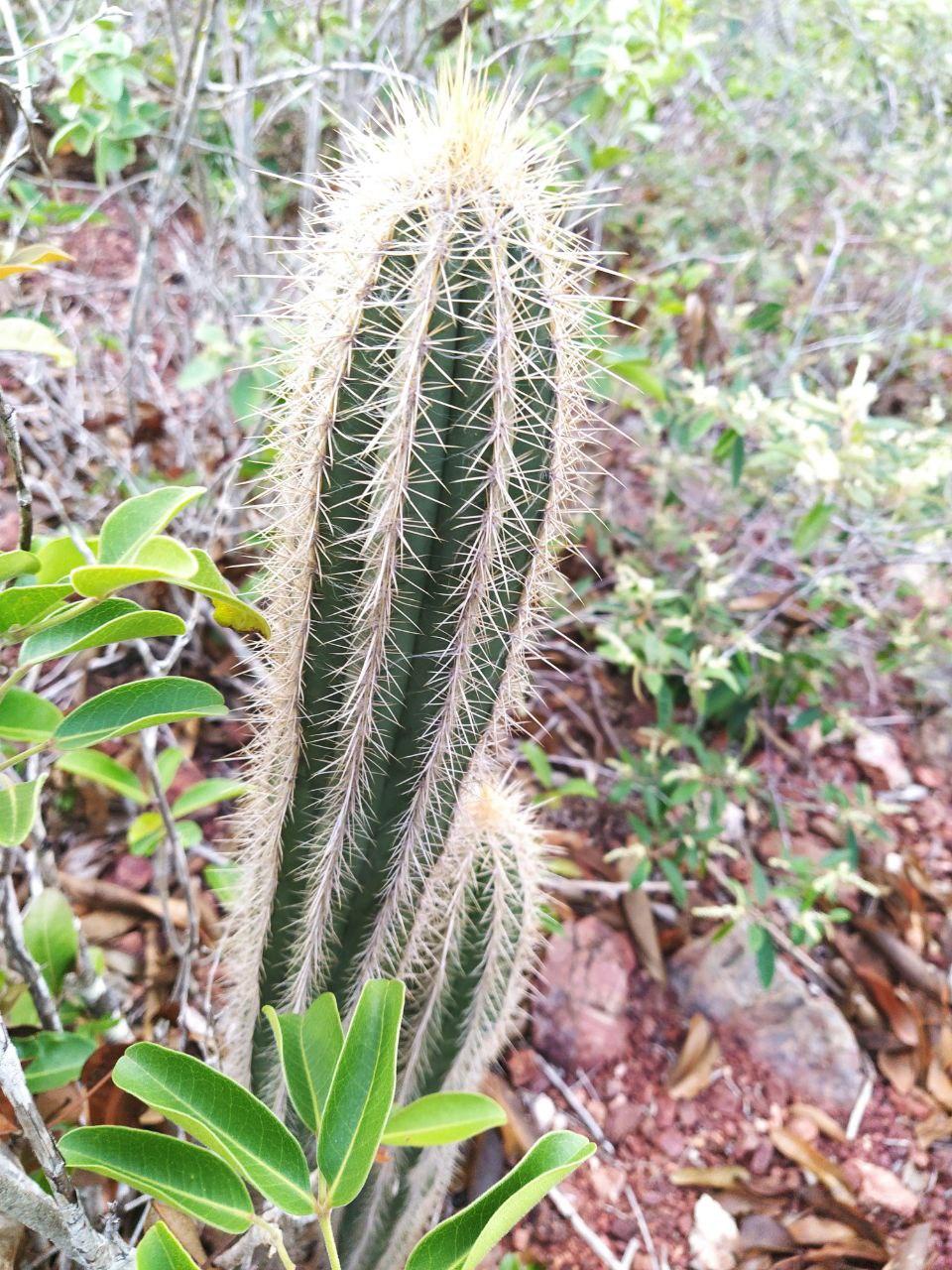
7- Tuna, y como nombre científico nopal o opuntia, es una planta que crece en toda la zona, en cualquier sitio, sea montaña, quebrada o zona árida, no hay lugar en el que no se observe esta plata, en épocas de lluvia florea y su su flor es de color amarillo, también da un fruto que nace siendo verde y luego se torna rojo, jamas lo he comido. Se dice que esta planta es medicinal, y con desprenderse una parte de el automáticamente puede nacer de ella.
He escuchado de personas que comen de esta planta, pero creo que tiene efectos alucinógenos, también puede soportar extremo verano.
Tuna, and as a scientific name nopal or opuntia, is a plant that grows throughout the area, anywhere, whether mountain, ravine or arid area, there is no place where you do not see this silver, in times of rain flowers and its flower is yellow, also gives a fruit that is born being green and then turns red, I have never eaten. It is said that this plant is medicinal, and by detaching a part of it automatically can be born from it.
I have heard of people eating this plant, but I think it has hallucinogenic effects, it can also withstand extreme summer.
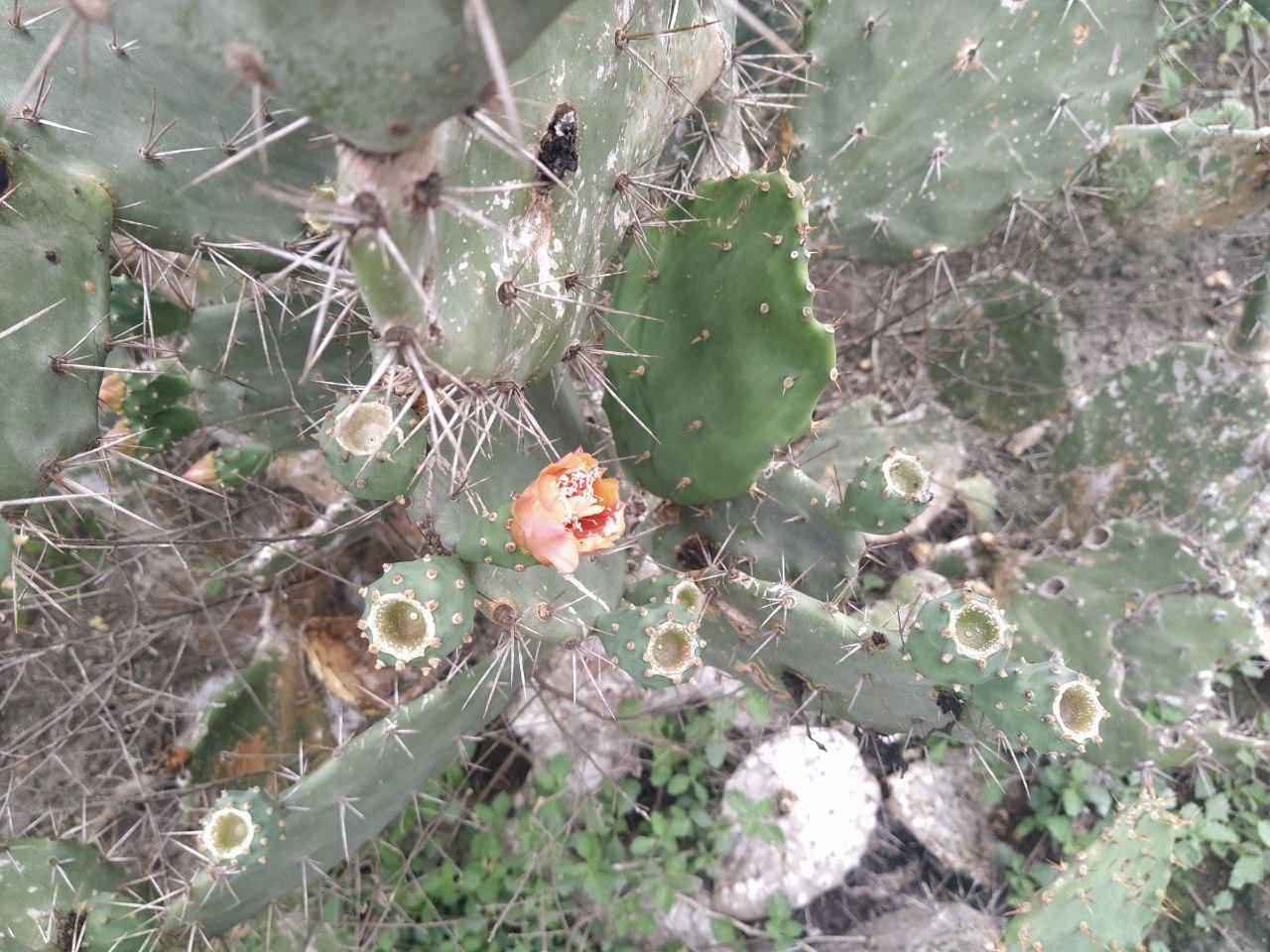
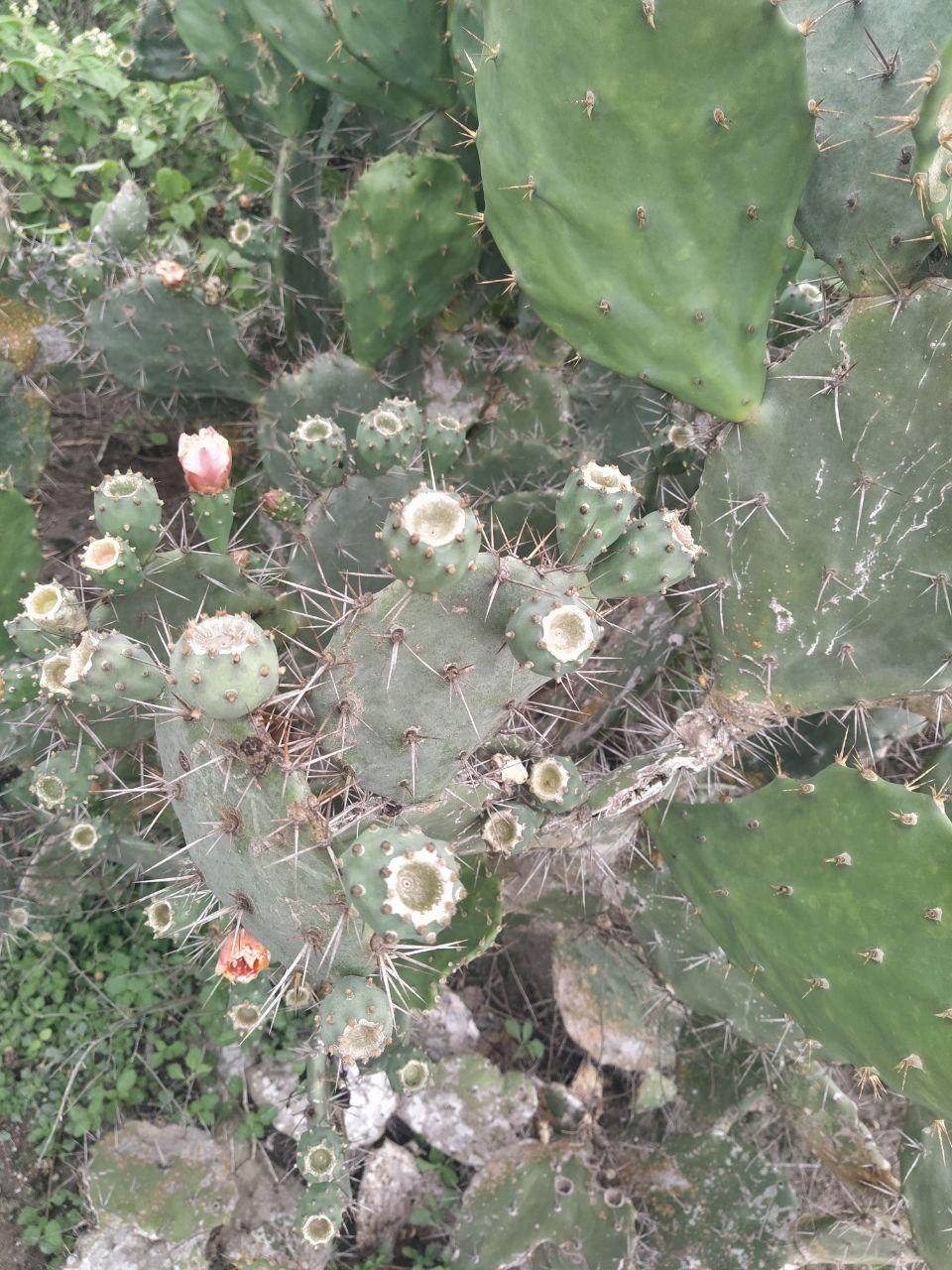
Finalmente he terminado con la clasificación de estos cactus silvestres que puedo ver siempre que voy de visita al campo, y como verán hay muchas mas variedades, mi investigación me dio a conocer, que estas plantas si son originarias del continente Americano, pero se llevaron a otros continentes y países como India o España, los científicos afirman que fueron las aves al momento de comer las frutas y liberar las semillas, pero cada planta se adapto a su nuevo ambiente.
Finally I have finished with the classification of these wild cacti that I can always see when I visit the field, and as you will see there are many more varieties, my research gave me to know, that these plants if they are original of the American continent, but they were taken to other continents and countries like India or Spain, the scientists affirm that they were the birds at the moment of eating the fruits and releasing the seeds, but each plant adapted to its new environment.
Espero que les guste, y si tienen algún cactus en casa distinto a estos, podrían dejarme un foto en los comentarios quisiera saber un poco mas de ellos.
Sin mas nada que agregar, me despido, un saludo a todos los Hivers que puedan leer este post.
I hope you like it, and if you have any cactus at home different from these, you could leave me a picture in the comments I would like to know a little more about them.
Without more anything to add, I say goodbye, a greeting to all the Hivers that can read this post.
Gracias @ewkaw por ayudarme a encontrar algunos nombres científicos./Thanks @ewkaw for helping me find some scientific names.
Fotos tomadas por Xiaomi Mi A3 / Photos taken by Xiaomi Mi A3
Thank you very much for your attention, I hope it is to your liking.
Todo el contenido fue redactado por mi, pero encontré información en estas webs/All the content was written by me, but I found information on these sites
Fuentes/Sources:
https://es.wikipedia.org/wiki/Cactaceae
https://es.wikipedia.org/wiki/Stenocereus_griseus
https://es.wikipedia.org/wiki/Stenocereus
http://www.llifle.com/Encyclopedia/CACTI/Family/Cactaceae/6467/Subpilocereus_repandus
https://www.cactiguide.com/cactus/?start=0&genus=Melocactus&species=
posh:
https://twitter.com/wiliisslr/status/1285447264077524992
Congratulations @wesp05! You have completed the following achievement on the Hive blockchain and have been rewarded with new badge(s) :
You can view your badges on your board And compare to others on the Ranking
If you no longer want to receive notifications, reply to this comment with the word
STOPSupport the HiveBuzz project. Vote for our proposal!
¡Felicitaciones!
1. Invierte en el PROYECTO ENTROPÍA y recibe ganancias semanalmente. Entra aquí para más información.
3. Suscríbete a nuestra COMUNIDAD, apoya al trail de @Entropia y así podrás ganar recompensas de curación de forma automática. Entra aquí para más información sobre nuestro trail.
4. Creación de cuentas nuevas de Hive aquí.
5. Visita nuestro canal de Youtube.
Atentamente
El equipo de curación del PROYECTO ENTROPÍA
Muchas gracias por el apoyo.
So interesting to see them growing in nature!
If it really is, they have a great impact on the wildlife in the area.
Thank you very much for the cross-post
You are welcome! 🌵 💪
I am so jealous of all those cacti growing there in the wild. Sorry I couldn't help out more.
If you go back there in spring you might see some in bloom :)
You actually helped me a lot, I'm grateful for that. And if I intend to go in the spring and see them bloom, I'm waiting a bit.
¡Las tunas son muy ricas! No son alucinógenas jejeje pero sí tienen muchos nutrientes
QUEE en serio las has probado, no te lo puedo creer, osea yo solo había escuchado que personas lo hacían, pero jamas conocí a alguien, a que saben?
¡Sí! son deliciosas y refrescantes, su sabor no se parece a otra fruta, tienen muchas semillas pero no pasa nada si te las comes, también puedes hacer jugo y filtrar las semillas. Por cierto que hace poco un supermercado cerca de mi casa trajo, y oye las venden caras (Bs. 420 mil el kg), se aprovechan de su aspecto exótico jajaja pero muy poca gente las compra porque no las conocen...
Te juro que me lo cuestas y no te creo jajajaj, osea yo escuche como dije, pero la verdad nunca imagine el sabor o algo. Sabes lo que si eh visto son las conservas de buche tampoco las he probado pero he visto como hacen el dulce tambien. 420mil x 1kg, yo no se que estoy esperando si consigo por montones jajajaj
Jajajaja pues sí, deberías averiguar dónde las puedes comercializar o simplemente lanzarte a venderlas por ahí a ver qué tal :)